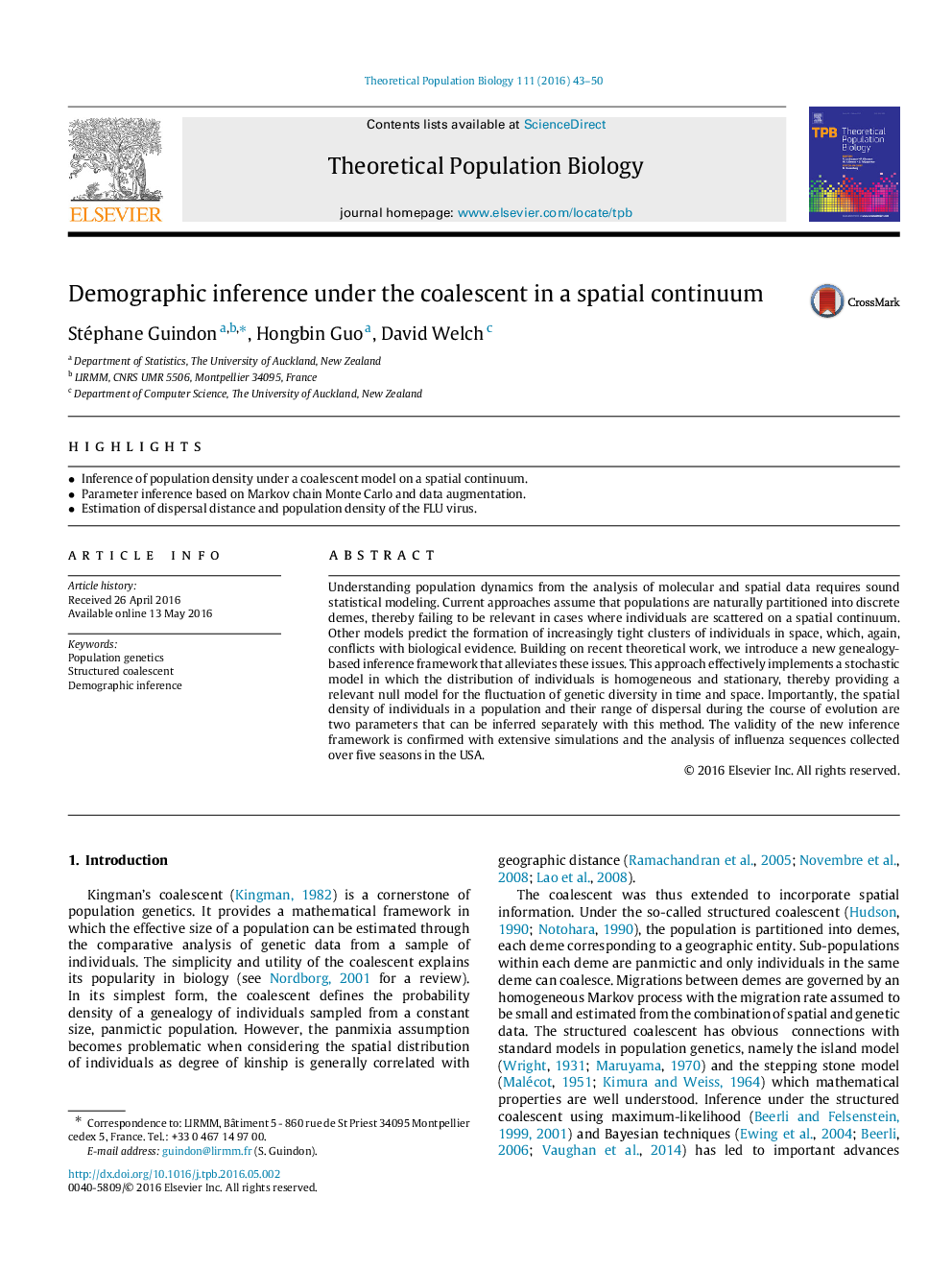| Article ID | Journal | Published Year | Pages | File Type |
|---|---|---|---|---|
| 4502242 | Theoretical Population Biology | 2016 | 8 Pages |
•Inference of population density under a coalescent model on a spatial continuum.•Parameter inference based on Markov chain Monte Carlo and data augmentation.•Estimation of dispersal distance and population density of the FLU virus.
Understanding population dynamics from the analysis of molecular and spatial data requires sound statistical modeling. Current approaches assume that populations are naturally partitioned into discrete demes, thereby failing to be relevant in cases where individuals are scattered on a spatial continuum. Other models predict the formation of increasingly tight clusters of individuals in space, which, again, conflicts with biological evidence. Building on recent theoretical work, we introduce a new genealogy-based inference framework that alleviates these issues. This approach effectively implements a stochastic model in which the distribution of individuals is homogeneous and stationary, thereby providing a relevant null model for the fluctuation of genetic diversity in time and space. Importantly, the spatial density of individuals in a population and their range of dispersal during the course of evolution are two parameters that can be inferred separately with this method. The validity of the new inference framework is confirmed with extensive simulations and the analysis of influenza sequences collected over five seasons in the USA.
